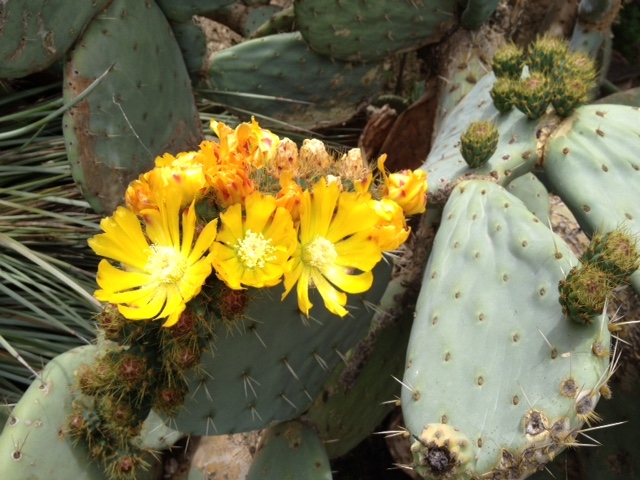Wheel Cactus
(Opuntia robusta)
Wheel Cactus (Opuntia robusta)
/
/

Cyril Nelson
Public Domain Mark 1.0
Image By:
Cyril Nelson
Recorded By:
Copyright:
Public Domain Mark 1.0
Copyright Notice:
Photo by: Cyril Nelson | License Type: Public Domain Mark 1.0 | License URL: https://creativecommons.org/licenses/by/2.0/ | Uploader: chnelsons | Publisher: Flickr |





































Estimated Native Range
Summary
Opuntia robusta, commonly known as Wheel Cactus, Nopal Tapon, or Camuesa, is a perennial cactus native to arid and semi-arid regions of central and northern Mexico. It is adapted to hot, dry climates and often found in desert scrub and rocky outcrops. This species can reach up to 1 meter (40 inches) in height when unsupported but may grow over 3 meters (10 feet) high with support. The distinctive blue-grey, round, and fleshy stem segments are up to 30 cm (1 ft) in diameter, with sharp spines that can be up to 5 cm (2 in) long. Wheel Cactus blooms with yellow, sessile flowers that have a fleshy base and appear on the edges of the upper stem segments. The flowers are followed by barrel-shaped, fleshy fruits that are pink or purple and up to 8 cm (3 in) long.
Opuntia robusta is valued for its sculptural form and low maintenance requirements, making it suitable for xeriscaping and rock gardens. It thrives in full sun and requires minimal water once established, preferring well-draining soils. While it can be a striking addition to a drought-tolerant garden, it is important to be aware of its potential invasiveness outside its native range. In cultivation, it is also used as a living fence or barrier due to its spiny nature. Gardeners should handle this plant with care to avoid injury from its spines.CC BY-SA 4.0
Opuntia robusta is valued for its sculptural form and low maintenance requirements, making it suitable for xeriscaping and rock gardens. It thrives in full sun and requires minimal water once established, preferring well-draining soils. While it can be a striking addition to a drought-tolerant garden, it is important to be aware of its potential invasiveness outside its native range. In cultivation, it is also used as a living fence or barrier due to its spiny nature. Gardeners should handle this plant with care to avoid injury from its spines.CC BY-SA 4.0
Plant Description
- Plant Type: Succulent
- Height: 3-8 feet
- Width: 3-8 feet
- Growth Rate: Moderate, Rapid
- Flower Color: Yellow
- Flowering Season: Summer
- Leaf Retention: Evergreen
Growth Requirements
- Sun: Full Sun
- Water: Very Low, Low
- Drainage: Medium, Fast
Common Uses
Bee Garden, Bird Garden, Butterfly Garden, Deer Resistant, Drought Tolerant, Fire Resistant, Groundcover, Hummingbird Garden, Low Maintenance, Potted Plant, Showy Flowers, Street Planting
Natural Habitat
Native to arid and semi-arid regions of central and northern Mexico, often found in desert scrub and rocky outcrops
Other Names
Common Names: Nopal Tapon, Camuesa
Scientific Names: , Opuntia robusta, Opuntia heliabravoana, Opuntia camuessa, Opuntia candelabriformis, Opuntia flavicans, Opuntia piccolominiana,
GBIF Accepted Name: Opuntia robusta H.L.Wendl.